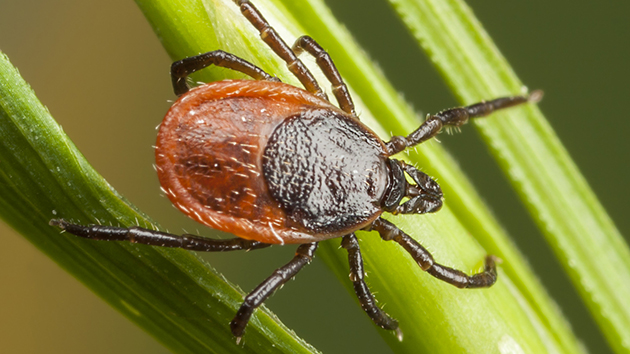
Asian longhorned tick continues to appear in US
The Board of Animal Health released a newsbyte on December 17th regarding the spread and impact of Asian longhorned ticks in the United States, an invasive species from Asia, New Zealand and Australia.
The longhorned tick was first discovered in New Jersey in 2017 on a domesticated sheep. From its first appearance, the tick continued to spread, and by September 2018, it was also found in Virginia, West Virginia, Arkansas, North Carolina, New York, Pennsylvania, Maryland, and Connecticut.
Since the first reported discovery, the tick has continued to appear on domestic animals, wildlife, and people. To date, there is no evidence that the longhorned tick transmits disease in the United States, but in other countries where the tick is endemic, it does transmit diseases of public and animal health concern.
Board of Animal Health: Bulletin
Board of Animal Health: Ticks and MN
Tick characteristics and prevention
The Asian longhorned tick (Haemaphysalis longicornis) is very fecund. In contrast to most ticks, the longhorned tick can reproduce offspring without mating, laying 1-2,000 eggs at a time. This results in huge numbers (hundreds to thousands) of ticks being found on a single animal, person or in the environment at one time.
The longhorned tick in other parts of the world is known to transmit infectious diseases. Disease known to be transmitted in other parts of the world include: Borrelia, Anaplasmosis, Ehrlichia, Rickettsia, and Babesia. In New Zealand and Australia, the tick can reduce cattle production by 25 percent.
General recommendation to prevent spread currently remain consistent with other tick prevention. Recommendations include: the use of EPA-registered insect repellents containing DEET, treatment of clothing and gear with products containing 0.5% permethrin, checking your body and animals for ticks, showering soon after being outdoors, and talking to your veterinarian about tick borne disease in your location and prevention strategies for your animals.
Public health emphasis: Disease is a real possibility
The last known introduction of an invasive tick species to the United States is thought to be 80 years ago. In Asia, the Longhorned tick carries thrombocytopenia syndrome virus, which is closely related to Heartland virus, a pathogenic tick-borne virus found in the Southeastern United States. To date, no human cases of disease have been associated with this tick in the United States; however, the possibility as demonstrated in Asia, is real.
Current research is aiming to determine what new laboratory tests are needed to detect pathogens that could be spread by these ticks, the frequency the tick bites people and animals in the US, and novel prevention and control strategies. The CDC has invested in workforce development, innovation and discovery, and state capacity building to expand public health impact. This includes the funding of five university based vector-borne disease centers for training next generations, establishing communities of practice, and conduct applied research surrounding vector-borne disease.
This framework aims to build national as well as state and local capacities to improve vector and human case surveillance, prevention, diagnosis, and treatment at a national level, and disease prevention and control at a state and local level.
